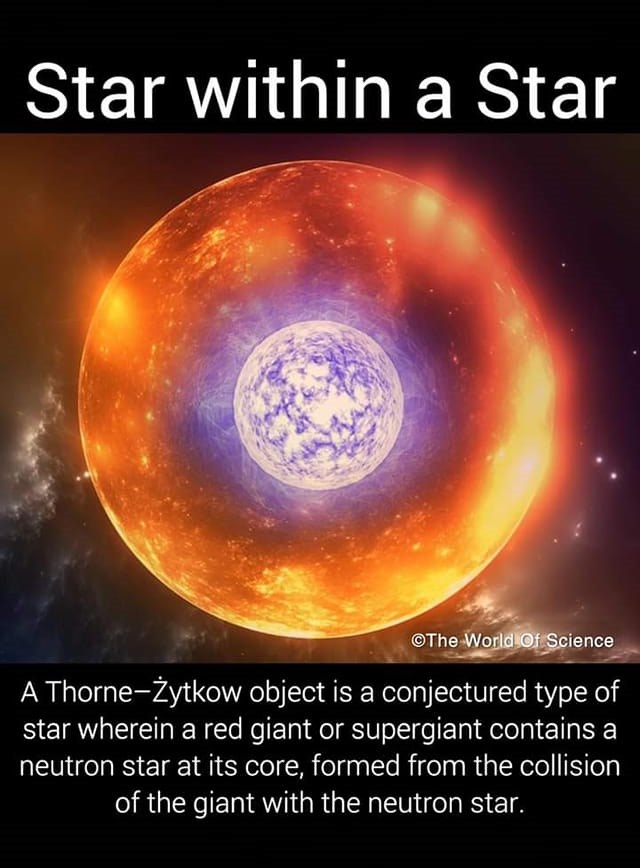
A Thorne–Żytkow object is formed when a neutron star collides with a star, typically a red giant or supergiant. The colliding objects can simply be wandering stars. This is only likely to occur in extremely crowded globular clusters. Alternatively, the neutron star could form in a binary system after one of the two stars went supernova. Because no supernova is perfectly symmetric, and because the binding energy of the binary changes with the mass lost in the supernova, the neutron star will be left with some velocity relative to its original orbit.
This kick may cause its new orbit to intersect with its companion, or, if its companion is a main-sequence star, it may be engulfed when its companion evolves into a red giant.
Once the neutron star enters the red giant, drag between the neutron star and the outer, diffuse layers of the red giant causes the binary star system’s orbit to decay, and the neutron star and core of the red giant spiral inward toward one another. Depending on their initial separation, this process may take hundreds of years. The surface of the neutron star is very hot, with temperatures exceeding 109 K: hotter than the cores of all but the most massive stars. This heat is dominated either by nuclear fusion in the accreting gas or by compression of the gas by the neutron star’s gravity. Because of the high temperature, unusual nuclear processes may take place as the envelope of the red giant falls onto the neutron star’s surface.
Source: Wikipedia

GIPHY App Key not set. Please check settings